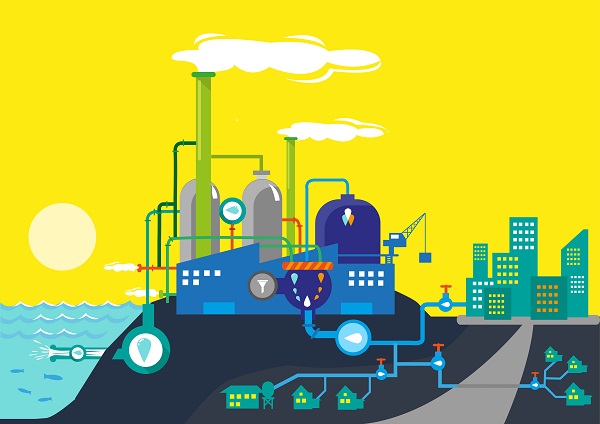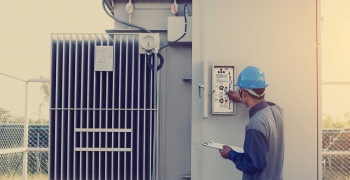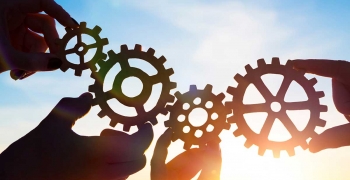According to the UN World Water Development Report 2019, more than 5 billion people could face water crises by 2050. Global water usage has been steadily rising at an annual rate of 1% since the 1980s. Depleting freshwater levels and the resulting drought and soil erosions have caused some of the most disastrous catastrophes of the past decade. The Australian bushfire that raged from July 2019 to February 2020 and the fires of Greece and California in 2018 are only a few examples of such calamities.
Much of the rising rate of water usage can be attributed to the surging demand for water stemming from rapid urbanization and industrial growth. This is especially true for emerging economies. The fact that reservoirs in Chennai, India’s sixth-largest city, have nearly run dry is proof of this crisis. Another recent example of this was Cape Town’s “Day-Zero” water crisis in 2018.
Since the late 1980s, humankind’s affair with the limited supply of water has been an effort in averting the inevitable. Considering the current water crisis, an archaic water transport infrastructure and the lack of investment for modernization pose some of the most pressing concerns for the sector. This has left many water companies struggling to deal with challenges like water shortage, non-revenue water, and climate change while striving to grow.
The increasing complexity of these challenges combined with the immediate need for modernization is compelling water management companies to embrace digital technologies. With the water sector’s value chain closely linked with environmental aspects, the integration of digital technologies in water management practices can help harmonize urban, industrial, agricultural, and ecological requirements.
The water industry may be comparatively new to the digital transformation bandwagon, but that hasn’t hindered progress. In 2019, the global smart water management market was estimated to be worth USD 13.54 billion. By 2025, it is expected to be worth USD 25.61 billion, recording a CAGR of 13.2%.
Water-as-a-service (WaaS) is poised to be a smart, sustainable service model that uses a highly intelligent network of systems to minimize wastage and resource consumption. By creating a comprehensive interface of data like weather and water usage, service providers enable a new dimension of efficient water usage.
Projected rapid growth rate indicates the crucial role innovative technologies, especially wireless communication and LTE enabled IoT solutions, will play in shaping the future of water management systems. Moreover, recent developments in IoT have made it possible for water management companies to integrate cost-effective smart equipment that can enhance operations and elevate water quality levels.
For instance, IoT-enabled smart meters can provide businesses and consumers with advanced water usage metrics and minimize water wastage in the medium term. Equipped with these smart technologies, water service providers can handle resource scarcity, ensure a seamless supply of clean water, develop resilient infrastructure, and improve program efficiency.
Another major area that can benefit from the integration of IoT-enabled smart technologies is anomaly detection. While a crucial component of water management, it is extremely difficult to detect leaks. With IoT-enabled sensors and meters, water management systems can detect leaks and other anomalies, like pump and valve malfunctions. By measuring water consumption, flow, pressure, and temperature data these sensors can triangulate leaks and monitor pump and valve health.
Monitoring the quality of water is perhaps the single most important aspect of water management. And this too is set to be revolutionized by the introduction of IoT-enabled devices. With specialized smart water monitoring instruments, water management systems can achieve a real-time view of various physiochemical aspects of water like turbidity, pH, and temperature to assess quality.
The sheer degree of precision and accuracy that these instruments can achieve when compared to traditional methodologies is one of the greatest benefits of deploying IoT-enabled devices.
The late entry into the digital landscape, however, has left water utilities firms lagging behind other utilities companies in adopting IoT-enabled smart meters and relevant advanced technologies. According to a report by West Monroe Partners, only 20% of water utilities companies in the US have adopted smart technologies. On the other hand, about 60% of electric utilities companies have adopted them.
Today, businesses are faced with two serious needs: digitalization urged by Industry 4.0 and the scarcity of water as a resource. This makes assimilating water usage information a powerful tool that OEMs can offer their consumers as a service.
Moving from a product-oriented model to a product and service-oriented model can help OEMs accelerate the digital transformation of the water sector as well as generate new revenue channels. For instance, by leveraging supervisory control and data acquisition (SCADA) systems and by making their equipment such as pumps, membrane systems, and valves smart and IoT enabled, OEMs can process information to optimize operations, systems, and processes.
Leveraging the services of OEMs has already helped the WaaS model witness equipment-centric advancements. Services such as material processing machinery, automated machine design, computational fluid dynamics (CFD), and robotics powered by IoT and value engineering have played a crucial role in this progress. As a result, utilities providers are being empowered to effectively monitor and control the entire water value chain to a greater extent.
Monitoring and control systems for water supply systems such as pipelines generate large volumes of operational technology (OT) data. Using IoT platforms cannot only facilitate a structured collection of this data but also enable more detailed sources such as image data to be used as sensory information. This data can then be made accessible for open collaboration between OT and IT systems.
Smart technologies can also be used in the diagnosis and mitigation of facility malfunctions and hazards. Ultrasonic sensors can monitor water levels to anticipate and prevent leaks in reservoirs or even floods. IoT-based sensors and solutions can detect and report the presence of chemicals and contaminants in water bodies using long-range (LoRa) networks, low-latency wireless connectivity (like 5G), and Wi-Fi/Li-Fi. These capabilities allow these technologies to be used for monitoring drinking water quality and reporting it to water service providers, thereby benefiting millions of households worldwide.
The WaaS infrastructure has moved well beyond the point where the use of IoT in the water sector could only mean ‘remote control.’ Instead, the technology is now an enabler of actionable data, which can be used to optimize the use of water. Robotics can be useful in detecting changes in water force in pipes to immediately identify potential leaks. Robots are already in use to clean drinking water tanks and augment wastewater treatment in both closed-loop systems and open areas. Service providers are already eyeing drones to maintain and regulate water treatment plants and monitor potential water pollution in areas near treatment plants and other water facilities.
Organizations, both public and private, spend millions of dollars on pipe renewals every year. One such instance is Sydney Water, a government-owned statutory corporation. By developing innovative robotic tools to detect vulnerable areas of piping, they were able to cut down on renewal costs by up to 20%. The corporation has also used IoT to improve various facets of their operations like sewer monitoring, water treatment and quality, and recording and monitoring valve positions.
At LTTS, we have developed solutions that cater to the specific challenge of streamlining the Water as-a-service value chain. We have the digital infrastructure that can provide real-time IoT monitoring solutions for water and infrastructure regulation. Leveraging our proprietary AI platform – AiKno, we have built algorithms to analyze contextual data and data aggregation in the cloud, which can detect the slightest irregularities and variations in water use and manage thousands of devices to collate the data in one place. This can provide contextual, actionable data to API users, enabling optimal utilization of water.
When it comes to water, every drop matters. Conserving resources, balancing energy consumption, minimizing water loss, preventing flood, executing predictive servicing, and maintenance, the challenges are many. Digital solutions are the key to stay on top of these demands and maintain a steady WaaS value chain. Both service providers and OEMs have a lot to gain from modern engineering services. From a business perspective, smart technologies not only provide real-time actions. From an enviro-social perspective, they could be the answer to a long-asked question.
Can we keep the elixir of life alive?




